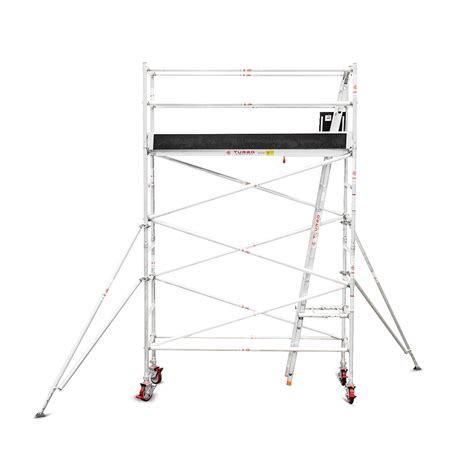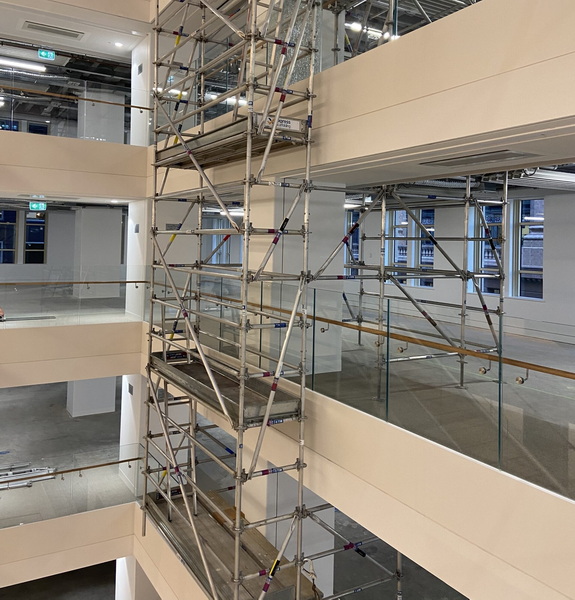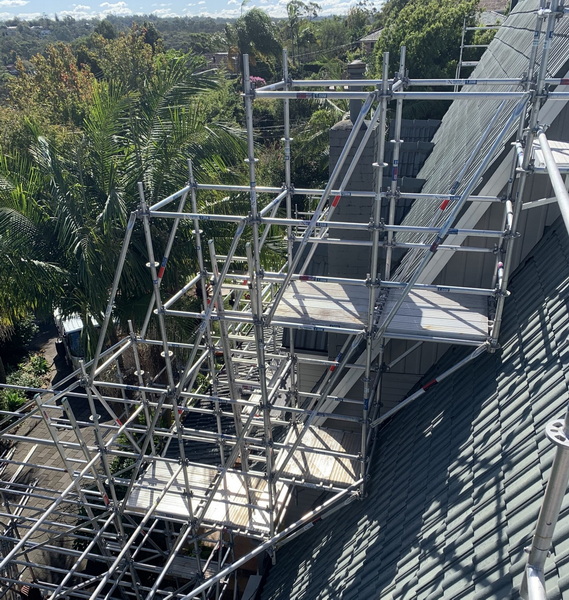Content Menu
● Understanding Lightweight Aluminum Scaffolding
>> Composition and Manufacturing
>> Advantages of Aluminum Scaffolding
● Load-Bearing Capacity and Safety Standards
>> Understanding Load Ratings
>> Safety Standards and Regulations
>> Factors Affecting Load Capacity
● Case Studies and Applications
>> Light Duty Applications
>> Medium Duty Applications
>> Heavy Duty Applications
>> Innovative Uses of Aluminum Scaffolding
● Comparison with Steel Scaffolding
>> Weight and Portability
>> Strength and Durability
>> Cost
>> Environmental Considerations
● Maintenance and Inspection
>> Regular Inspection
>> Maintenance Procedures
>> Replacement of Damaged Parts
● Conclusion
● FAQ
>> 1. What is the maximum load capacity of lightweight aluminum scaffolding?
>> 2. How does aluminum scaffolding compare to steel scaffolding in terms of strength?
>> 3. Is aluminum scaffolding suitable for outdoor use?
>> 4. What safety precautions should be taken when using aluminum scaffolding?
>> 5. How often should aluminum scaffolding be inspected?
● Citations:
Lightweight aluminum scaffolding has revolutionized the construction, maintenance, and entertainment industries by providing a versatile and easily transportable alternative to traditional steel scaffolding. Its reduced weight offers significant advantages in terms of maneuverability and ease of setup. However, the question remains: Is lightweight aluminum scaffolding strong enough for heavy-duty applications? This article delves into the properties, uses, load-bearing capabilities, and safety considerations surrounding lightweight aluminum scaffolding to determine its suitability for heavy-duty tasks.

Understanding Lightweight Aluminum Scaffolding
Composition and Manufacturing
Lightweight aluminum scaffolding is typically constructed from high-grade aluminum alloys. The specific alloy used plays a crucial role in determining the scaffolding's strength, durability, and resistance to corrosion. Aluminum alloys are chosen for their high strength-to-weight ratio, making them ideal for applications where portability and ease of handling are essential.
Aluminum Scaffolding Composition
The manufacturing process involves extrusion, welding, and precision engineering to create scaffolding components that meet stringent safety standards. These components include frames, braces, platforms, and guardrails, all designed to work together to form a stable and secure structure.
Advantages of Aluminum Scaffolding
Aluminum scaffolding offers several key advantages over traditional steel scaffolding:
- Weight: Aluminum is significantly lighter than steel, making it easier to transport, assemble, and dismantle. This reduces labor costs and the risk of worker fatigue and injuries.
- Corrosion Resistance: Aluminum forms a natural oxide layer that protects it from rust and corrosion, making it suitable for use in a wide range of environments, including those with high humidity or exposure to chemicals.
- Ease of Assembly: Aluminum scaffolding systems are designed for quick and easy assembly, often using modular components that can be easily connected and adjusted.
- Versatility: Aluminum scaffolding can be configured in various ways to suit different applications, including rolling towers, fixed platforms, and suspended scaffolding.
Load-Bearing Capacity and Safety Standards
Understanding Load Ratings
The load-bearing capacity of scaffolding is a critical factor in determining its suitability for different types of work. Load ratings are typically specified by manufacturers and are based on rigorous testing and engineering calculations. These ratings indicate the maximum weight that the scaffolding can safely support, including the weight of workers, tools, and materials.
Scaffolding is generally classified into three categories based on its load-bearing capacity:
- Light Duty: Suitable for tasks such as painting, cleaning, and light repairs, with a typical load capacity of up to 25 pounds per square foot.
- Medium Duty: Designed for general construction and maintenance work, with a load capacity of up to 50 pounds per square foot.
- Heavy Duty: Used for more demanding tasks such as bricklaying, concrete work, and heavy equipment installation, with a load capacity of up to 75 pounds per square foot or more.
Safety Standards and Regulations
To ensure the safety of workers and the public, scaffolding must comply with relevant safety standards and regulations. These standards are typically set by government agencies and industry organizations and cover all aspects of scaffolding design, construction, and use.
In the United States, the Occupational Safety and Health Administration (OSHA) sets the standards for scaffolding safety. OSHA regulations cover topics such as:
- Scaffolding construction and stability
- Load-bearing capacity
- Guardrail and fall protection requirements
- Inspection and maintenance procedures
- Worker training and competence
Compliance with these standards is essential to prevent accidents and injuries and to ensure that scaffolding is used safely and effectively.
Factors Affecting Load Capacity
Several factors can affect the load capacity of aluminum scaffolding, including:
- Material Quality: The quality and grade of the aluminum alloy used in the scaffolding construction play a significant role in its strength and load-bearing capacity.
- Design and Engineering: The design of the scaffolding, including the size and spacing of frames, braces, and platforms, affects its ability to distribute weight and withstand stress.
- Assembly and Installation: Proper assembly and installation are critical to ensure that the scaffolding is stable and can support the intended load.
- Environmental Conditions: Environmental factors such as wind, temperature, and moisture can affect the strength and stability of aluminum scaffolding.
- Wear and Tear: Over time, scaffolding components can become worn or damaged, reducing their load-bearing capacity and increasing the risk of failure.
Regular inspection and maintenance are essential to identify and address any issues that could compromise the safety and performance of the scaffolding.

Case Studies and Applications
Light Duty Applications
Lightweight aluminum scaffolding is commonly used in light-duty applications such as painting, plastering, and general maintenance. Its portability and ease of assembly make it ideal for tasks that require frequent movement and setup.
Medium Duty Applications
In medium-duty applications, such as general construction and repair work, aluminum scaffolding provides a stable and safe platform for workers and materials. Its corrosion resistance makes it suitable for use in a variety of environments, including those with high humidity or exposure to chemicals.
Heavy Duty Applications
While aluminum scaffolding is not typically used in heavy-duty applications, it can be engineered to meet the load-bearing requirements of certain tasks. For example, aluminum scaffolding with reinforced frames and platforms may be used for bricklaying or concrete work.
Innovative Uses of Aluminum Scaffolding
Aluminum scaffolding is also used in a variety of innovative applications, such as:
- Entertainment Industry: Aluminum scaffolding is used to create stages, platforms, and lighting structures for concerts, festivals, and theatrical productions.
- Aerospace Industry: Aluminum scaffolding is used to provide access for maintenance and repair of aircraft and spacecraft.
- Marine Industry: Aluminum scaffolding is used for shipbuilding and repair, as well as for maintenance of offshore platforms and vessels.
Comparison with Steel Scaffolding
Weight and Portability
One of the most significant differences between aluminum and steel scaffolding is weight. Aluminum is approximately one-third the weight of steel, making it much easier to transport, assemble, and dismantle. This can result in significant cost savings in terms of labor and transportation.
Strength and Durability
While aluminum is not as strong as steel, it can still provide adequate load-bearing capacity for many applications. Aluminum alloys are chosen for their high strength-to-weight ratio, making them a viable alternative to steel in certain situations.
Cost
Aluminum scaffolding is typically more expensive than steel scaffolding, due to the higher cost of aluminum and the more complex manufacturing processes involved. However, the long-term cost savings associated with reduced labor and transportation costs can offset the initial investment.
Environmental Considerations
Aluminum is a highly recyclable material, making it an environmentally friendly choice for scaffolding. Steel is also recyclable, but the production of steel requires more energy and resources than the production of aluminum.
Maintenance and Inspection
Regular Inspection
Regular inspection of aluminum scaffolding is essential to ensure its safety and performance. Inspections should be conducted before each use and should include a thorough examination of all components, including frames, braces, platforms, and guardrails.
Maintenance Procedures
Maintenance procedures should include cleaning, lubrication, and repair of any damaged or worn components. Aluminum scaffolding should be stored in a dry, protected area to prevent corrosion and damage.
Replacement of Damaged Parts
Any damaged or worn components should be replaced immediately to prevent accidents and injuries. Replacement parts should be of the same quality and specifications as the original components.
Conclusion
In conclusion, lightweight aluminum scaffolding can be strong enough for heavy-duty applications, provided that it is properly designed, manufactured, and maintained. The load-bearing capacity of aluminum scaffolding depends on several factors, including the quality of the aluminum alloy, the design of the scaffolding, and the assembly and installation procedures.
While aluminum scaffolding may not be suitable for all heavy-duty tasks, it offers several advantages over traditional steel scaffolding, including reduced weight, corrosion resistance, and ease of assembly. By understanding the properties, uses, and safety considerations surrounding lightweight aluminum scaffolding, users can make informed decisions about its suitability for their specific needs.

FAQ
1. What is the maximum load capacity of lightweight aluminum scaffolding?
The maximum load capacity of lightweight aluminum scaffolding varies depending on the design, materials, and construction. It is essential to refer to the manufacturer's specifications and safety standards to determine the specific load capacity of the scaffolding.
2. How does aluminum scaffolding compare to steel scaffolding in terms of strength?
Steel scaffolding is generally stronger than aluminum scaffolding. However, aluminum scaffolding can be engineered to provide adequate load-bearing capacity for many applications, especially when weight and portability are important considerations.
3. Is aluminum scaffolding suitable for outdoor use?
Yes, aluminum scaffolding is suitable for outdoor use due to its corrosion resistance. Aluminum forms a natural oxide layer that protects it from rust and corrosion, making it ideal for use in a variety of environments.
4. What safety precautions should be taken when using aluminum scaffolding?
When using aluminum scaffolding, it is essential to follow all safety standards and regulations. This includes ensuring that the scaffolding is properly assembled, that it is stable and level, and that workers are properly trained in its use. Fall protection measures, such as guardrails and safety harnesses, should also be used.
5. How often should aluminum scaffolding be inspected?
Aluminum scaffolding should be inspected before each use to ensure that it is in good condition and that all components are properly connected. Regular inspections can help identify any potential issues before they lead to accidents or injuries.
Citations:
[1] https://pplx-res.cloudinary.com/image/upload/v1744531161/user_uploads/EcFoauLTsNzyozS/03583C59.jpg
[2] https://pplx-res.cloudinary.com/image/upload/v1744531160/user_uploads/BRsoOZQJKavqthK/03583C59.jpg






















